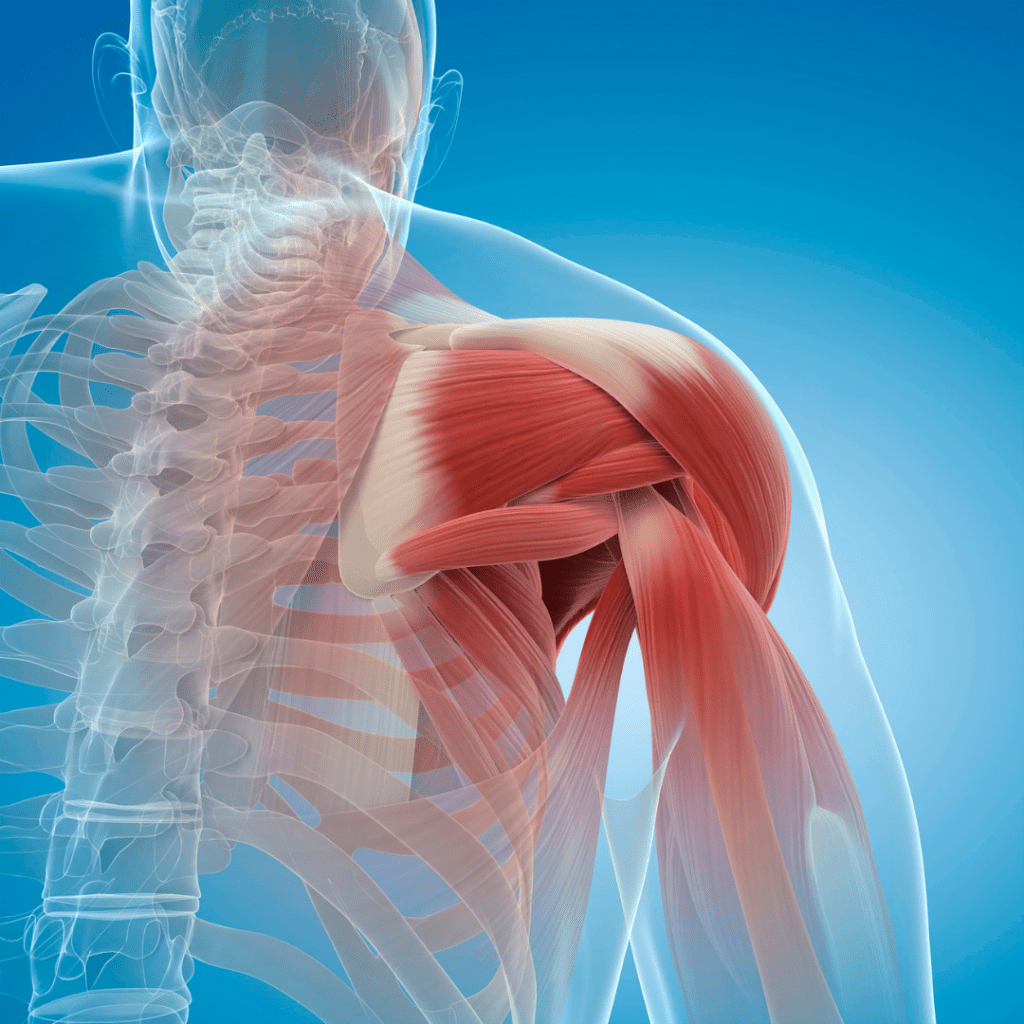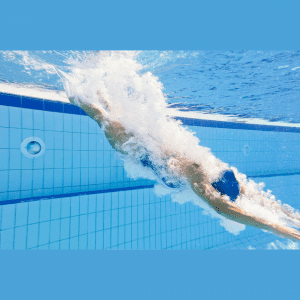Now that the cold weather is upon us, you may be looking to stay active indoors! If you’re like me, you might be heading to a local pool for some well-deserved exercise. Whether you’re swimming laps, doing an Aquafit class, or just keeping active with your kids, we all want to make the most of the time and have fun!
How common are shoulder injuries?
Unfortunately, for some of us, shoulder issues and pain can hold us back from doing the exercises we love! Of all injuries that swimmers encounter, the shoulder is the most injured body part.
- Nearly 30% of all swimming injuries affect the shoulder. ¹ ²
- Shoulder injuries can happen at any age, in both dominant and non-dominant arms, with any stroke, in any sex, and at any training intensity!³
What are the main causes of shoulder pain?
Many times, these injuries are due to range of motion or strength deficits in the rotator cuff. This can lead to conditions including rotator cuff tendinopathy, shoulder impingement, shoulder bursitis, and/or muscle strains.³ But what is the rotator cuff – and how can we manage these injuries?

Is the rotary cup the problem?
The rotator cuff (and not rotary cup!) is a series of four muscles that sit on our shoulder blade and surround our shoulder. These muscles play a few important roles in our body.
- They help to stabilize our shoulder in overhead movements, especially in common strokes like front crawl or breaststroke⁴.
- The muscles each have individual roles, assisting with raising the arm to the side or rotating the shoulder.⁴
- When these muscles aren’t doing their job, our shoulders have more difficulty managing the stresses of exercise and can begin to give us pain!
What can I do for shoulder pain?
The good news is – these injuries can be managed with Physiotherapy, and still allow you to exercise and stay active! Physiotherapists are uniquely skilled in diagnosis and treatment of shoulder injuries. We will work with you to discuss the symptoms you’re experiencing, assess the strength, ROM, and function of the shoulder and rotator cuff, with the goal of getting you back to the exercises you love! Targeted exercises to the shoulder – especially strengthening exercises can help to reduce pain. We may also use some hands-on techniques and a variety of modalities.

If you’re having shoulder pain from your strokes, don’t wait until it stops you from staying active! Our team at PhysioWorks in Airdrie, AB will dive right into these issues with you and get you back to the pool!
– Aaron Prosser, Physiotherapist Intern at Coopers Town PhysioWorks
References
- Avinash Chandran, Sarah N. Morris, Bernadette A. D’Alonzo, Adrian J. Boltz, Hannah J. Robison, Christy L. Collins; Epidemiology of Injuries in National Collegiate Athletic Association Women’s Swimming and Diving: 2014–2015 Through 2018–2019. J Athl Train 1 July 2021; 56 (7): 711–718. doi: https://doi.org/10.4085/1062-6050-724-20
- Adrian J. Boltz, Hannah J. Robison, Sarah N. Morris, Bernadette A. D’Alonzo, Christy L. Collins, Avinash Chandran; Epidemiology of Injuries in National Collegiate Athletic Association Men’s Swimming and Diving: 2014–2015 Through 2018–2019. J Athl Train 1 July 2021; 56 (7): 719–726. doi: https://doi.org/10.4085/1062-6050-703-20
- Edward J. Weldon, Allen B. Richardson, UPPER EXTREMITY OVERUSE INJURIES IN SWIMMING: A Discussion of Swimmer’s Shoulder, Clinics in Sports Medicine, Volume 20, Issue 3, 2001, Pages 423-438, https://doi.org/10.1016/S0278-5919(05)70260-X.
- https://www.physio-pedia.com/Rotator_Cuff







